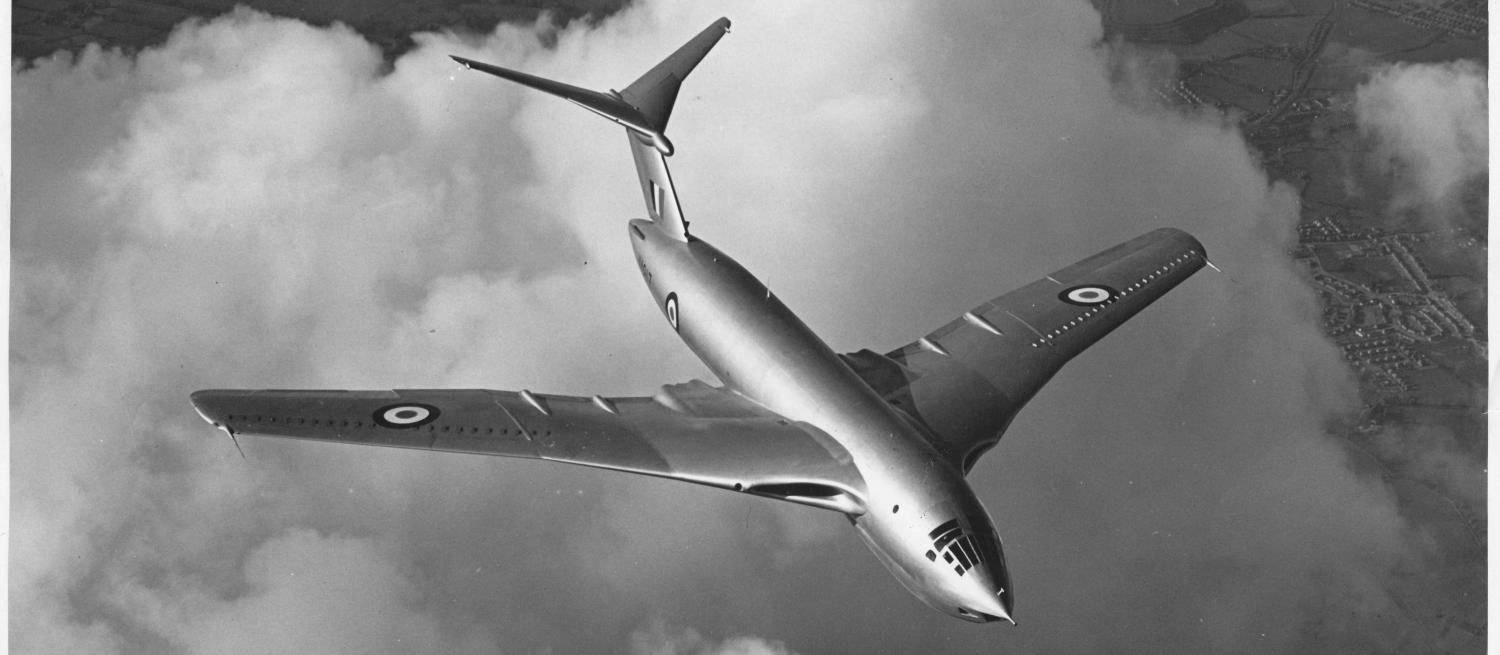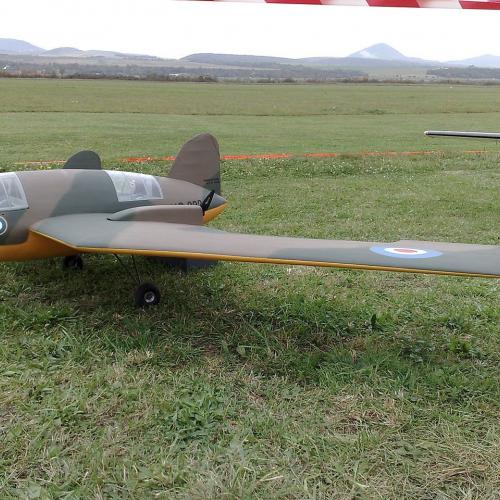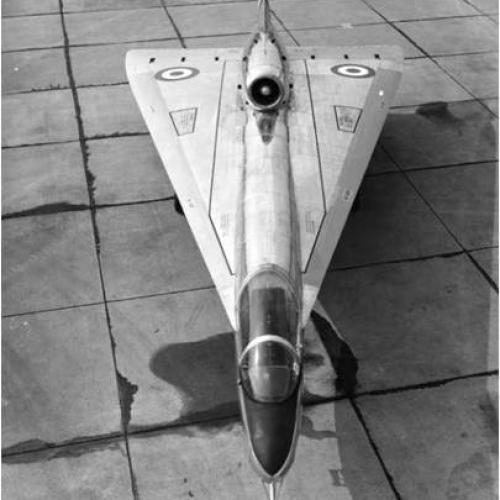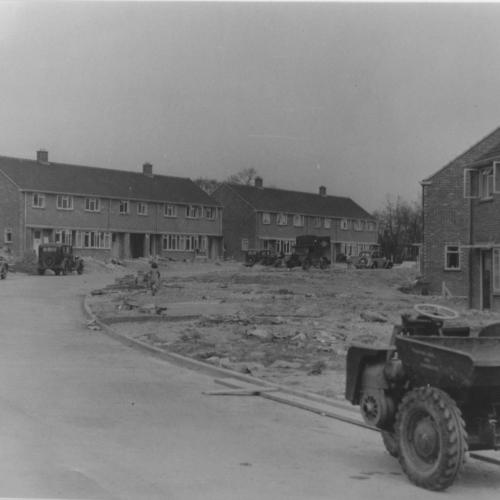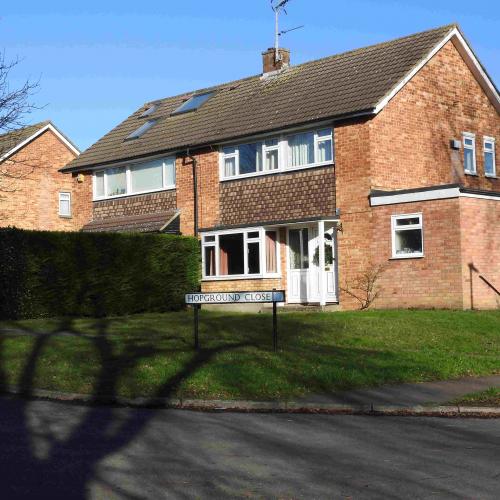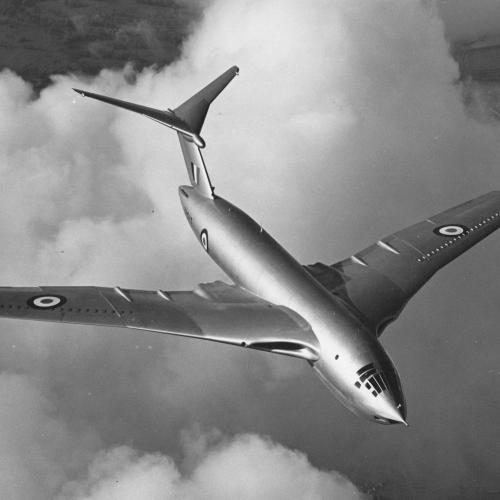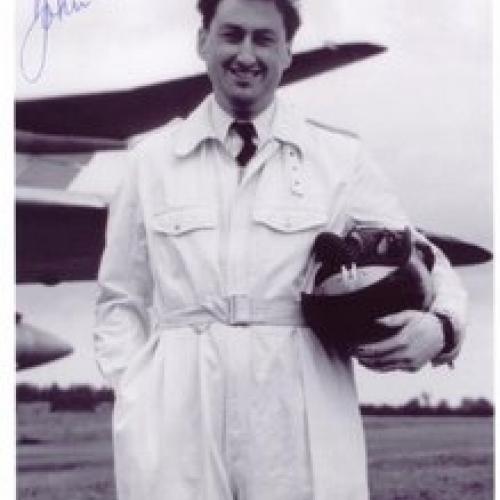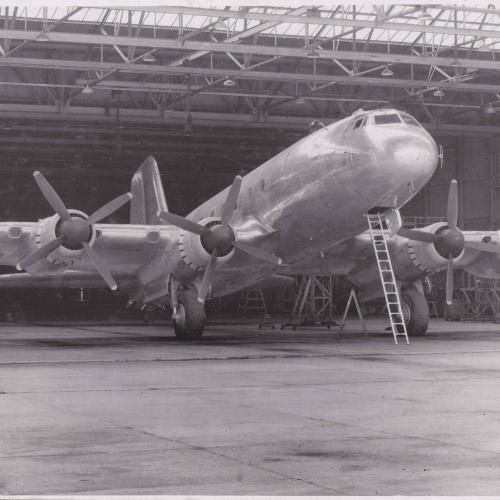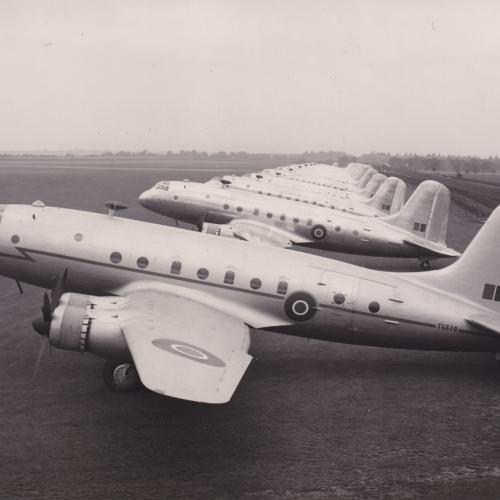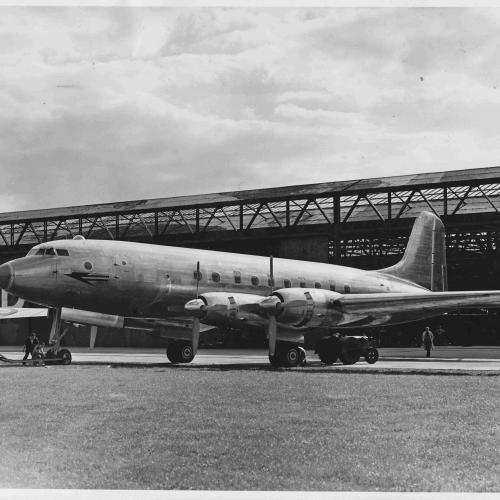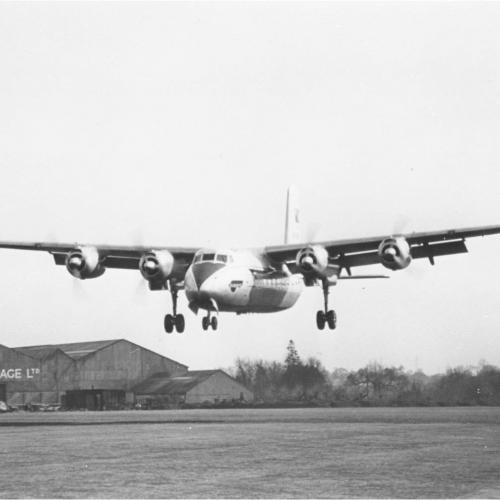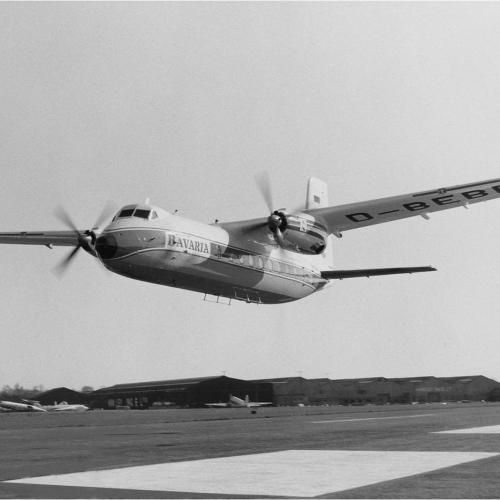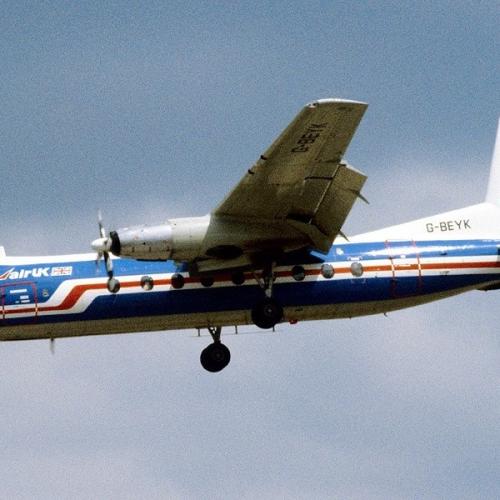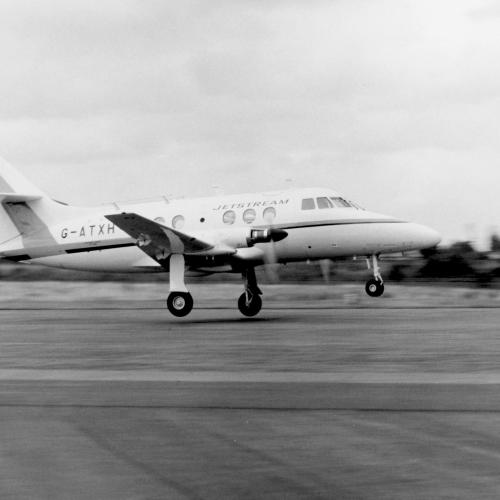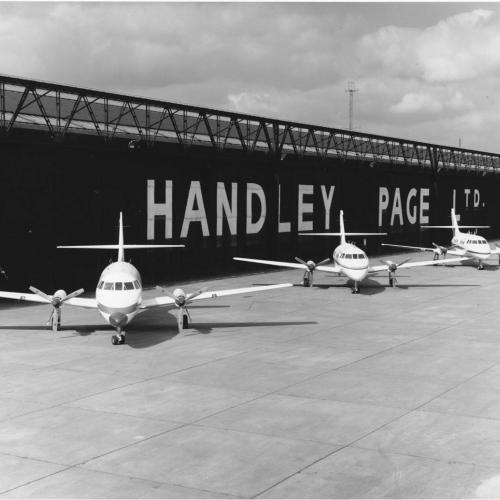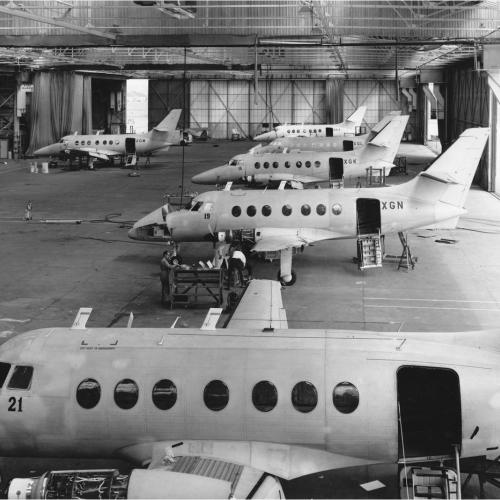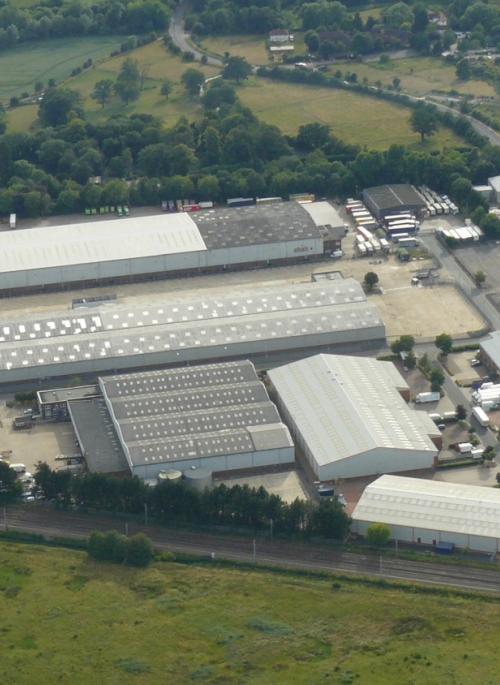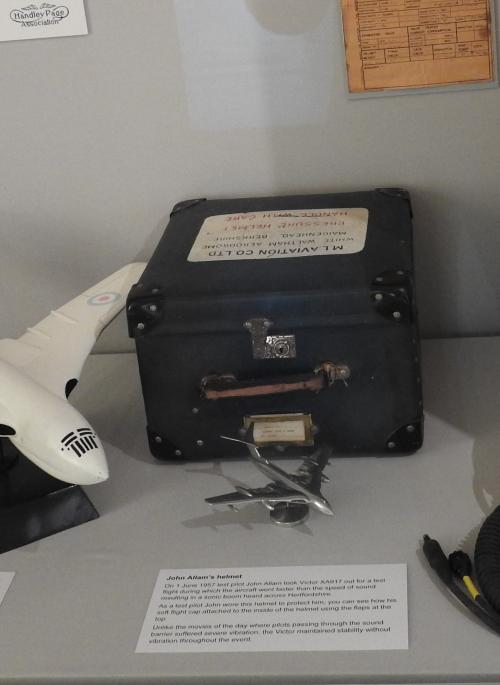Research at Handley Page
Handley Page built and tested a number of different research aircraft from the 1940s onwards. In the 1940s they built the HP75 to test out problems around aircraft without tails. Because of its unusual appearance it was nicknamed The Manx (named after the tailless cat). The first flight in June 1943 was terminated early when the canopy was lost in mid-flight, but the pilot managed to land the plane safely. In December 1945 the Manx's regular crew were killed flying the Handley Page Hermes prototype. The Manx had only accumulated about 17 hours of flight time over approximately 30 flights when flight tests were finally ended in April 1946.
Other research aircraft included the HP88, built to test a crescent shaped wing which was used on the later Victor aircraft, and the HP115 - a subsonic aircraft built to test problems with low-speed handling of Concorde.
Images:
1. This is Handley Page HP75 Manx radio-controlled model, seen at Ražňany airport in Slovakia, during an annual model exhibition (image courtesy of Jagermeister).
2. HP115 supersonic research aircraft.
A place to live
In the 1950s Handley Page needed to provide more homes for their employees near Radlett. Working with the local council they built houses, bungalows and flats with the option to rent or buy.
Although these homes were built over 60 years ago, a handful are still occupied by their original families.
Housing was provided in the following locations:
Bricket Wood: Hunters Road, Juniper Avenue, Black Boy Wood and Claremont.
Frogmore: Radlett Road and Hampden Place.
London Colney: Telford Road.
Park Street: Orchard Drive, Dell Rise, and How Wood.
Radlett: Kitswell Way, The Ridgeway and Heyford Close
St Albans: Hopground Close.
Images:
1. Sign in Bricket Wood.
2. Construction on Handley Page housing in the 1950s.
3. Hopground Close in The Camp area of St Albans today.
HP Victor and the sound barrier
On Saturday 1 June 1957 test pilot John Allam, supported by flight observers, Paul Langston and Geoffrey Wass were returning to Radlett in their Victor XA917 when the cockpit indicators registered a speed of Mach 1.1 – the aircraft had exceeded the speed of sound.
On arriving back at Radlett, the control tower operator mentioned that local residents had phoned in to complain about aircraft noise that day. Allam claimed the crew hadn’t heard anything but the following day one of Allam’s superiors mentioned he had heard the sonic boom whilst shopping with his wife in Watford and Allam admitted he had planned the whole thing before take-off to demonstrate the Victor's superiority over the Vickers Valiant and Avro Vulcan.
Because the Victor had seats facing backwards for their rear crew members, one of the flight observers became the first person to fly through the sound barrier backwards.
Images:
1. The HP Victor in flight.
2. Test pilot John Allam.
John Allam's helmet
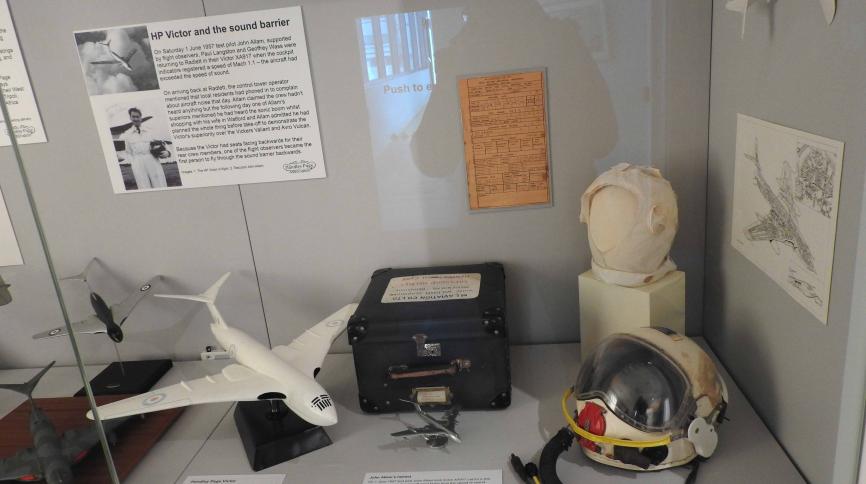
On 1 June 1957 test pilot John Allam took Victor XA917 out for a test flight during which the aircraft went faster than the speed of sound resulting in a sonic boom heard across Hertfordshire.
As a test pilot John wore this helmet to protect him, you can see how his soft flight cap attached to the inside of the helmet using the flaps at the top.
Unlike the movies of the day where pilots passing through the sound barrier suffered severe vibration, the Victor maintained stability without vibration throughout the event.
HP Hastings and Hermes
The HP67 Hastings was a British troop-carrier and transport aircraft made by Handley Page for the Royal Air Force. It came into service during September 1948 and at the time was the largest transport plane ever designed for the service. It was first used alongside HP Halifax aircraft, in the Berlin Airlift. Later, Hastings were used by the RAF during conflicts such as the Suez Crisis and the Indonesian Confrontation. Beyond its use for transport, several Hastings were modified to perform weather forecasting, training, and VIP duties.
A civilian version of the Hastings was the Handley Page Hermes. In August 1950 the British Overseas Airways Corporation (BOAC) started using the Hermes on their West Africa service from London Heathrow to Accra via Tripoli, Kano and Lagos, as services to Kenya and South Africa commenced before the end of that year.
Images:
1. Handley Page Hastings circa 1948-9.
2. Handley Page Hastings awaiting delivery to the RAF circa 1948-9.
3. Handley Page Hermes IV prototype at Colney Street circa 1948.
Berlin Airlift – Halifax & Hastings
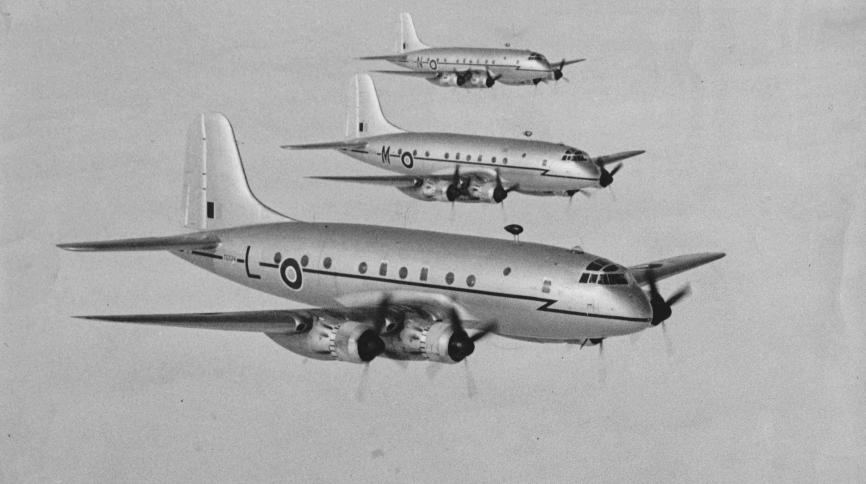
At the end of the Second World War, Germany was divided and its capital Berlin was jointly administered by the USSR (Russia), Britain, France and the United States. Berlin, one hundred and ten miles inside the Russian zone of Germany, was reached by agreed road, rail and river routes. When the Russians closed all surface routes to Berlin the RAF began Operation Plainfare to drop supplies into Berlin.
Between June 1948 and June 1949, seven civilian airlines operated some forty converted or modified HP Halifax aircraft in the operation and in November 1948 the new HP Hastings were used as well.
Worldwide travel in the HPR Herald
The Handley Page Dart Herald is a 1950s British turboprop passenger aircraft. The name "Herald" was chosen as it is easy to translate into French and Spanish.
The first prototype made its maiden flight from Radlett on 25 August 1955, however during the design period a new Rolls Royce Dart turboprop engine had shown proven success in their competitor’s Vickers Viscount. Handley Page responded by adapting their design and adding a Dart engine to create the HPR7 Dart Herald.
The first Dart Heralds to take passengers on holiday were on the Highlands and Islands routes and Jersey Airways. They were eventually bought by more than 30 airlines operating across the world from Canada to the Philippines. The last ever Dart Herald passenger flight was operated under the Ryanair name in 1987.
Images:
1. The original four engine Herald in around 1955.
2. The two engine Dart Herald in the 1960s.
3. An Air UK Dart Herald landing in Newquay.
Jetstream and the end of Handley Page
In the late 1960s Handley Page designed the Jetstream. It was a small, streamlined aircraft as the company could not afford to compete with the larger aircraft of the British Aircraft Corporation and Hawker Siddeley.
The design had a distinctive long nose profile and the first production model Jetstream 1 flew on 6 December 1968. However, delivery and engine problems had driven development costs from original estimates of £3 million to over £13 million. Only three Jetstream 2s were completed before Handley Page went bankrupt, and the production line was eventually shut down in 1970.
When Handley Page was closed down the development of their final Jetstream aircraft was transferred to Scottish Aviation which then became part of British Aerospace.
Variants of the Jetstream are still in use around the world. In 2019 70 Jetstream 31s were in airline service: 49 in Americas, 15 in Europe, 5 in Asia Pacific and 1 in Africa.
Jetstreams have even appeared on film including in the 1979 film "Moonraker" starring Roger Moore where British secret agent James Bond (007) is thrown out of the aircraft while it is in flight.
1. Jetstream first flight from Radlett 18 August 1967.
2. Three of the four prototype Jetstreams at Colney Street in 1968.
3. Jetstream final assembly at Colney Street in 1970.
